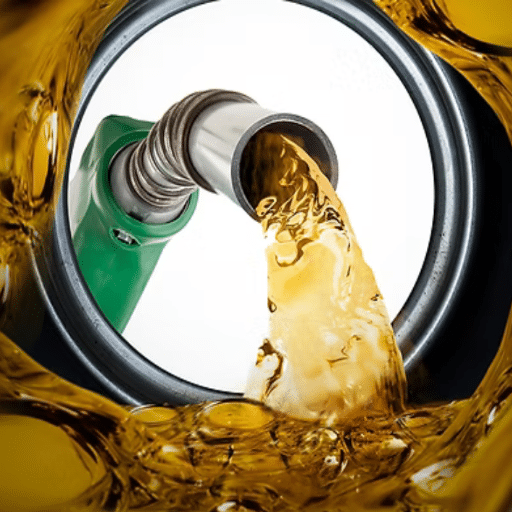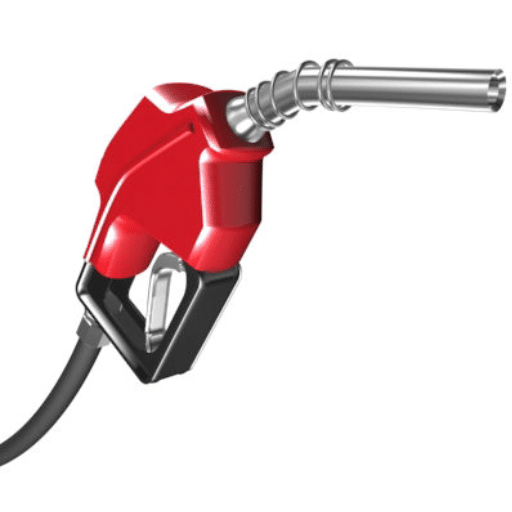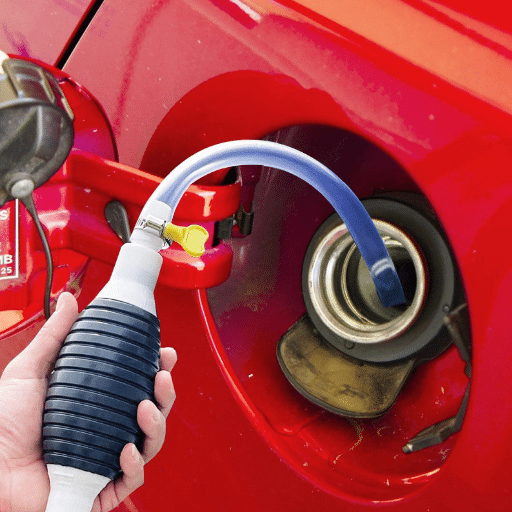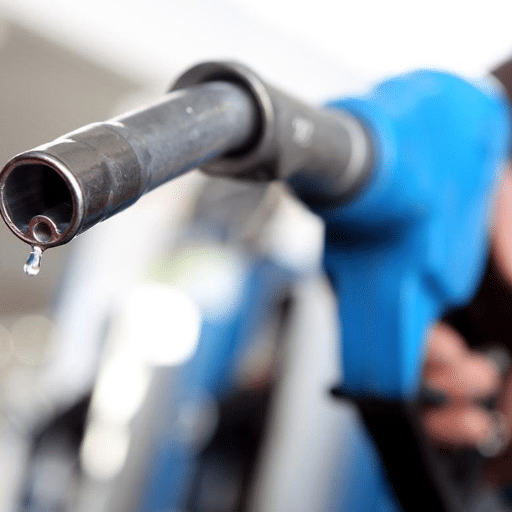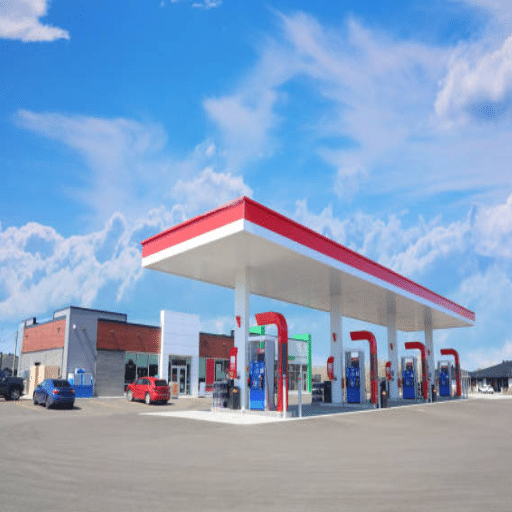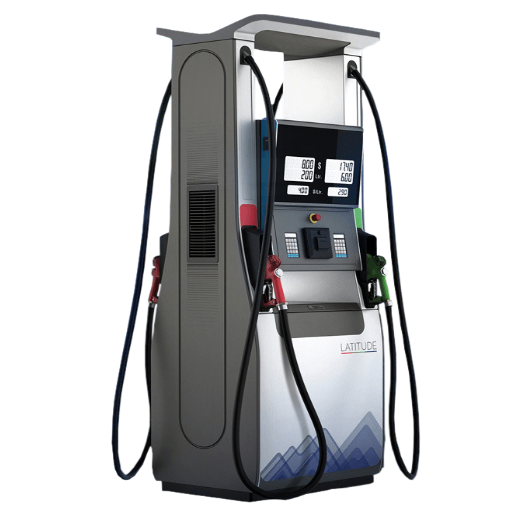Portable gas stations are primarily adapting to current changes in refueling methods. These are a new means of delivering fuel to consumers, offering convenience, flexibility, and efficiency to an extent that has never been considered before. Imagine not having to wait in long lines at traditional gas stations or killing time because you simply can’t find fuel anywhere in the remotest areas where traditional infrastructure is nonexistent. Here, we will explore the potential of portable gas stations to revolutionize industries and everyday life, while paving the way for the future of mobile fueling. For business owners, tech enthusiasts, and those simply curious about the evolution of fuel, this trend is certainly worth watching.
Understanding Portable Fuel Stations

These are self-contained units that store and dispense fuel outside the traditional gas station infrastructure. The stations have been designed with mobility to permit relocation away from places where access to fuel is either limited or temporarily unavailable. These stations typically come equipped with built-in tanks, dispensing equipment, and safety measures to ensure the safe dispensing of fuel. The very convenience and versatility of such units, combined with the ability to operate in remote or underserved regions, make the product a market solution for construction, logistics, and emergency services.
Definition and Importance of Portable Gas Stations
Mobile gas stations are innovative solutions that facilitate on-the-go fuel distribution when the requirements of industries or circumstances arise. These stations are self-contained units equipped with fuel storage tanks, dispensing hoses, and safety systems that comply with industry regulations, allowing them to be quickly transported and deployed to remote locations, disaster sites, or areas with limited infrastructure.
In recent years, the global market for portable gas stations has experienced rapid growth, reflecting a significant shift in consumer preference towards safe and convenient fuel distribution. Portable fuel stations are expected to grow at an approximate compound annual growth rate (CAGR) of 6% over the upcoming decade, reflecting the high adoption rate of mobile fueling solutions.
In other words, the construction, mining, agriculture, and logistics industries require such stations to operate in locations where permanent fuel infrastructure is impossible to build.
Safety Priority: Safety measures, apart from flexibility, are mentioned in the extent of portable fuel stations. Modern units come with a spill prevention system, GPS tracking, and real-time monitoring. These upgrades maximize operational safety. Fuel management and mitigation against environmental impacts are included. Furthermore, the capability of rapid deployment during natural disasters or humanitarian crises has been a blessing for emergency services and relief organizations.
A portable gas station is a critical response to the changing dynamics faced by contemporary industries, with its key offerings being ease of use, cost-effectiveness, and sustainability. Thus, the adoption of these mobile fuel systems heralds the accessibility of fuel services into the future, while accommodating a wider range of dynamic and high-impact applications.
How Portable Fueling Solutions Work
Portable fueling solutions feature engines and user-oriented designs, complemented by an added layer of safety features. Portables mainly consist of fuel tanks that have been reinforced with high-quality materials, such as carbon steel or aluminum alloys, to withstand multiple environmental pressures and ensure durability. The integrated dispensing units achieve maximum efficiency and controlled transfer of fuel, and may be assisted by pumps and meters for accurate measurement and minimal wastage.
A certain number of portable stations use digital monitoring and IoT technologies to improve their functionality. This means that these systems can operate on tracks with real-time fuel levels, detect potential leaks, and provide automatic alerts for maintenance work. Some are designed in accordance with stringent environmental and safety regulations, such as those established by the EPA (the Environmental Protection Agency), to reduce emissions and minimize the ecological footprint.
According to industry data, these portable fueling solutions can hold between 500 and 10,000 gallons of fuel, depending on the model and application.
This flexibility enables them to adapt to varying needs, such as those found in remote construction sites, agricultural setups, disaster relief scenarios, and similar environments. Being modular in design means that they can be easily moved and assembled, with assembly often requiring less than an hour in the field.
The increased installation of these systems stems from the positive influence they have on making fueling operations easier, allowing them to be faster and more efficient, and decreasing downtime. Communities working in logistics, mining, and emergency response teams operate in far-from-populated, remote, or high-risk areas.
Types of Portable Fuel Stations
Portable fuel stations come in diverse configurations to meet the specific requirements of various applications. The main types include:
Mobile Fuel Trailers
They are compact, towable units that come with storage tanks, pumps, and dispensers. These units are suited for small-scale operations or temporary sites, offering a good measure of flexibility for projects such as construction, agriculture, and smaller fleets.
Containerized Fuel Stations
Because such stations are built inside ISO shipping containers, they have the advantages of high durability and security. They find their typical uses in remote locations and industrial settings, such as mining or oil and gas operations. Such systems come with features such as larger fuel storage capacities, advanced dispensing systems, and some options like filtration or monitoring capabilities.
Self-Bunded Tanks
Self-bunded tanks are fuel stations that feature a double wall to prevent any leaks or environmental contamination. Any tank is preferred for its durability and safety features, allowing for use over extended periods in logistics operations or the heavy equipment industry.
Each type has promise for a variety of purposes, ensuring reliable and efficient fueling of both temporary and permanent installations, with high regard for mobility, safety, and environmental protection.
Key Features of Mini Portable Gas Stations
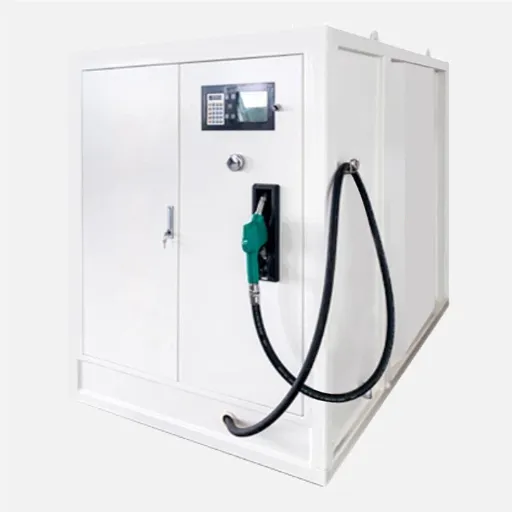
- Compact Design: Easy to move and erect at more remote or temporary locations.
- Integrated Fuel Dispensing: This simplifies the fuel dispensing process, enhancing its efficiency.
- Durable Construction: Built to stand heavy-duty applications and ensure long reliability.
- Leak Prevention: Double-walled tanks to enhance safety and environmental protection.
- Customizable Options: Changeable features depending on the industry or type of fuel.
- Comply With Safety Standards: Built to meet safety standards for safe and secure operation.
Design and Construction of Mini Gas Stations
Mini gas stations are designed with considerations for functionality, safety, and adaptability to various environments. These compact installations often utilize modular systems that enable rapid on-site installation and allow for scaling up should the need arise.
According to recent industry reports, the use of prefabricated components reduces construction time by around 40%, allowing facilities to be ready in the shortest amount of time in both urban and remote areas.
Typically, these stations are equipped with double-walled tanks that feature an enhanced leak detection mechanism to meet environmental safety standards. These gas stations are constructed using materials that withstand the test of time, such as corrosion-resistant steel, thereby ensuring extended life and reduced maintenance costs. According to some accounts, the use of high-strength materials could increase the life expectancy of the facilities above by up to 25-30% compared to conventional design.
In addition to advanced automation technologies, mini gas stations have experienced a significant shift in their day-to-day operations. Features such as automatic payment terminals, real-time fuel monitoring, and digital inventory tracking enhance operational efficiency while reducing the need for on-site personnel. Operational costs can be further substantially reduced by 15-20% using such advanced systems.
Due to their flexibility, mini gas stations can be adapted by industries to suit their specific needs, including those for biofuels, CNG (Compressed Natural Gas), or EV (Electric Vehicle) charging stations. As the world moves towards greener alternatives, hybrid types that combine conventional fuel sources with renewable energy options have seen a rising trend. For example, integrating solar panels and energy storage systems in mini gas stations could reduce their energy costs by nearly 30%.
Given its strategic design, the little gas stations focus on the actual dispensing of fuel in underserved regions while contributing to greener and more innovative energy infrastructure in the future.
Fuel Storage and Capacity Considerations
Storage of fuel and capacity planning must be done effectively to ensure the smooth functioning of mini gas stations, especially in areas with varied energy demand. Recent technological advancements in fuel storage focus on durability, safety, and adaptability. For example, modern fuel tanks may be fabricated from materials such as fiberglass-reinforced plastic (FRP) to minimize leaks and resist environmental wear, thereby providing long-term reliability to users.
Capacity optimization depends on the fuel demand pattern and the storage rules in the area. Typically, an underground storage tank in a mini gas station can range from 10,000 to 30,000 gallons, enabling these stations to meet daily or weekly demands without requiring frequent resupply.
With modular storage arrangements, station operators can then increase storage capacity when demand increases or add extra tanks to store other types of renewable fuels, such as biodiesel or ethanol blends.
In the early days, numerous systems existed, primarily for fuel verification and control of fuel bunkering. However, having developed philosophies since then, the industry ensures that such advanced fuel monitoring systems have been modernized for real-time tracking of operational needs in the field, thereby eliminating any chance of shortage or overstocking. Such systems can, in turn, integrate with the logistics network for efficient fuel delivery, thereby reducing downtime and optimizing performance. Additionally, the inclusion of renewable options can increase energy flexibility, allowing mini stations to prepare for both current and future energy needs.
Portable Fuel Dispensers: Functionality and Efficiency
Such fuel dispensing methods have revolutionized fuel distribution in a wide range of industries. The convenience and flexibility of these services are incomparable. These units are designed to provide sufficient fuel in areas such as remote locations, construction sites, farms, and emergencies where permanent infrastructure may not be available. Present-day fuel dispensers are equipped with digital flowmeters that accurately track fuel usage, thereby reducing fuel wastage and improving cost management.
Many portable fuel dispensers utilize high-quality pumps and sturdy hose arrangements to handle diesel, gasoline, and occasionally biodiesel, ensuring compatibility with various requirements. The industry analysis reveals that the market for portable fuel dispensers is expected to grow steadily owing to the increasing need for refueling efficiency across multiple sectors. These products are also capable of reducing human error and enhancing operational safety through automatic control systems and real-time monitoring.
On the other hand, material technology innovation has enabled the creation of lightweight yet durable designs, making movement and deployment easier. Dispensing capacities range from approximately 200 liters to over 2,000 liters, with smaller units suitable for less demanding needs and larger ones designed to cater to larger requirements.
Some versions have begun to incorporate “green” features to satisfy more stringent environmental regulations, ensuring sustainability without compromise.
Benefits of Using Portable Gas Stations
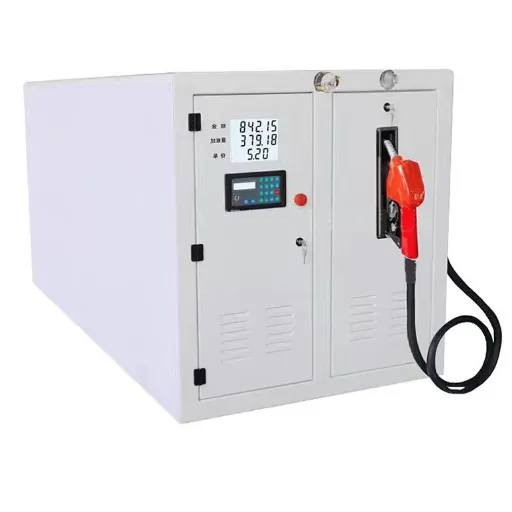
- Convenience: The presence of portable fuels enables fueling in some rarely situated or temporary locations, thereby avoiding potential trips to distant fuel stations.
- Adaptability: They can serve from small quantities to large ones, depending on the diverse functions they support, including construction, agriculture, or emergency responses.
- Cost Reduction: When fuel is brought to the work site, significant time is lost in the transfer process, resulting in related expenses.
- Green Solutions: Most modern designs comply with prevailing environmental protocols, which minimize emissions to the lowest possible level and provide an avenue for sustainability.
- User-Friendliness: The easy-to-transport, lightweight, and rugged design enables quick setups, setting the stage for operational efficiency.
Convenience for Transportation and Mobile Applications
The kind of service offered by Portable Fuel Solutions benefits the entire transportation and mobile application sector. Recently, they have entered the market with lightweight properties. In this regard, these fuel tanks are constructed using materials such as high-density polyethylene and aluminum, making them easily transportable and suitable for operation across various terrains.
Industry insights now reveal that the global portable fuel tank market is expected to register a CAGR of 4.7% from 2023 to 2030, further strengthening the demand for fuel tanks in logistics and work-site operations.
With added safety features that include automatic shut-off valves and spill-resistant caps for safe handling and reduced environmental hazards, these tanks provide complete peace of mind. They also offer excellent mobility from user-friendly accessories such as built-in handles and wheels, even in rugged terrain. Being versatile, they find application in companies ranging from the construction industry to marine operations, where varied refueling alternatives are first-rate options. In addition, time-constrained deployments of these fuel systems and linking operations allow the activities to remain productive without the need for Continuous dependency on fixed infrastructure.
Cost-Effectiveness of Portable Fuel Solutions
The portable refueling solutions offer significant savings for businesses by reducing their dependence on fixed refueling infrastructure. These systems help reduce transportation costs associated with fuel delivery at job sites located in remote fields.
According to industry reports, these portable tanks and fuel systems can reduce downtime by nearly 30%, as the equipment can often be refueled on-site without the need for recurring trips to local gas stations.
Besides this, portable meeting is meant to last longer and hence the maintenance costs remain lower.
Due to their scalability, portable fuel systems enable businesses to purchase the precise model they need, thereby avoiding unnecessary capital expenditures. It has also been found that there is significantly less fuel loss due to spillage or theft with secure portable units, leading to the proper utilization of resources. These solutions enable more efficient and cost-effective management of fuel across remote and temporary sites, resulting in even lower operational costs and improved productivity.
Safety and Compliance Regulations
By regulations governing the safe storage and handling of fuel, the safety of persons, equipment, and the environment must be ensured. Portable fuel storage containers are subject to stringent compliance standards by OSHA and the Environmental Protection Agency in the USA. A secondary containment system is required for these containers to capture any spillage or leakage that may enter the soil or water source in certain areas.
Moreover, laws on labeling, fire prevention, and inspections are typically implemented to identify hazards.
Recent data indicate that the fulfillment of all these guidelines proportionately reduces the possibility of accidents. Reports from facilities show an above 45% reduction in incidents related to fuel over a five-year period as a result of implementing proper and stringent safety measures.
Portable fuel storage solutions are being increasingly developed for use that adheres to international standards, such as ISO 9001 for quality management and ISO 14001 for environmental management, thereby facilitating safer and more reliable operations on a global scale. These measures will, therefore, help ensure that businesses operate responsibly while also limiting their exposure to damages arising from legal black holes due to non-compliance.
Maintenance and Repair of Portable Fuel Stations
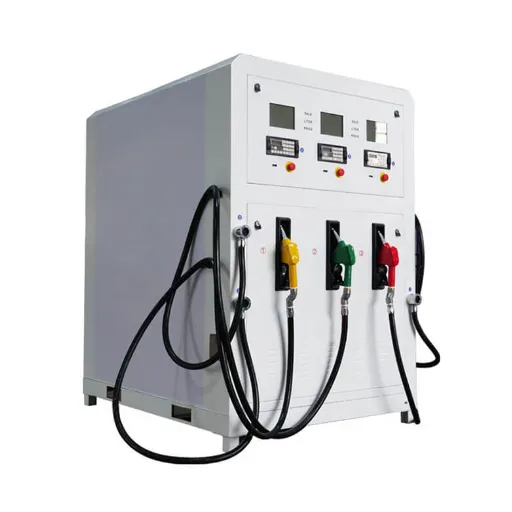
Complete maintenance and timely repair ensure the tremendous performance and enhanced longevity of portable fuel stations. Some important considerations include the following:
| Maintenance Task | Frequency | Purpose |
|---|---|---|
| Routine Inspections | Weekly/Monthly | Assess wear and tear, check for leaks and corrosion |
| Filter Replacement | Every 6 months | Prevent contamination and maintain fuel quality |
| Pump Calibration | Quarterly | Ensure accurate dispensing and regulatory compliance |
| Hoses and Nozzles Check | Monthly | Prevent fuel spills and accidents |
| Safety Systems Test | As required | Verify fire suppression and emergency shut-off functionality |
| Record Keeping | Ongoing | Compliance and management efficiency |
By incorporating the practices mentioned above, a business can help increase safety, minimize downtime, and ultimately extend the life of the portable fuel station.
Routine Maintenance Practices
Routine maintenance for portable fuel stations is essential to ensure operational efficiency and meet safety standards. The key practices include:
Weekly Checks for Corrosion and Leakage
Inspect the tanks and hoses for corrosion, leaks, and signs of wear and tear weekly. According to infamous reports, undetected leaks have caused environmental contamination, potentially putting companies under scrutiny for fines in the hundreds of thousands and requiring cleanup.
Filter Replacement
The filters should be checked monthly and replaced every six months, or as advised by the manufacturer. A blocked filter impedes the flow of fuel, reducing its quality and, in effect, damaging the engines that require clean fuel and rapid delivery systems for optimal fuel efficiency.
Fuel Quality Tests
Preventative checks for water, sediment, or other contaminants can lessen filter clogging. Contaminated fuel may reduce equipment effectiveness by approximately 30%, according to a study, underscoring the importance of checking to maintain fuel purity.
Calibration of Dispensing Equipment
Fuel load dispensing gauges and meters must be checked for proper calibration at least quarterly. Correct calibration must be conducted to ensure the purchaser receives the correct quantity of fuel; otherwise, the business would be penalized for unlawful practices, thereby preventing further loss of revenue.
Lubrication of Moving Parts
Lubricate the moving parts of pumps and valves every three months to reduce friction and enhance service life.
Emergency Response Drills
Instruct the team to hold drills for the purpose of testing emergency procedures. Being prepared can significantly reduce response time in an actual case of a spill, fire, or system failure.
Therefore, the application of these detailed maintenance procedures, based on data and industry best practices, will provide room for operational reliability and compliance while reducing future costs. Carrying out and properly scheduling these steps can lead to increased trust from customers, resulting in long-term savings.
Common Issues and Repair Solutions
| Issue | Impact | Solution | Prevention Benefit |
|---|---|---|---|
| Wear and Tear | Misalignments, overheating, and efficiency loss | Preventative maintenance, lubrication, and visual inspections | Up to 25% increase in equipment life |
| Corrosion | Structural damage, contamination | Anti-corrosive coatings, corrosion-resistant materials | 30% reduction in annual maintenance costs |
| Electrical Failures | System malfunctions, downtime | Infrared thermographic inspections | 60% faster fault detection |
| Hydraulic System Failures | Leaks, contamination, worn seals | Regular filter checks, high-quality hydraulic fluids | 20% decrease in downtime |
| Software Malfunctions | Workflow disruption | Regular updates, patches, and automated monitoring | 40% reduction in downtime |
By developing strategies to prevent these common issues and utilizing advanced technologies, companies can maintain efficient operations and minimize unplanned outages, thereby keeping overall costs under control.
Enhancing the Longevity of Portable Fuel Equipment
Maintenance and handling are crucial for the extended lifespan of portable fuel equipment.
It is found that mechanical failures can be prevented up to 35% just by cleaning and inspection done on time. Periodic checking and timely replacement of filters help mitigate the highest risk of clogged systems, thereby improving efficiency.
Other maintenance procedures would include using good-quality fuel and proper storage. Inferior fuel may carry contaminants that corrode and degrade equipment with time. On the storage part, it is recommended to place and track equipment in dry and well-ventilated places that are shielded from direct sunshine to avoid any level of wear and tear induced by the environment; for instance, UV rays and moisture have the potential to weaken seals and hoses, which then turn into premature degradation.
Lastly, adhering to the manufacturer’s recommendations for maintenance scheduling, such as oil changes and lubrication, can help extend the equipment’s life. According to data from industry practitioners, if appropriately maintained, portable fuel equipment will work reliably for at least 50% longer than poorly maintained units.
By following a maintenance schedule in conjunction with industry best practices, businesses can ensure their equipment operates smoothly, safely, and more reliably.
Future Trends in Portable Gas Stations
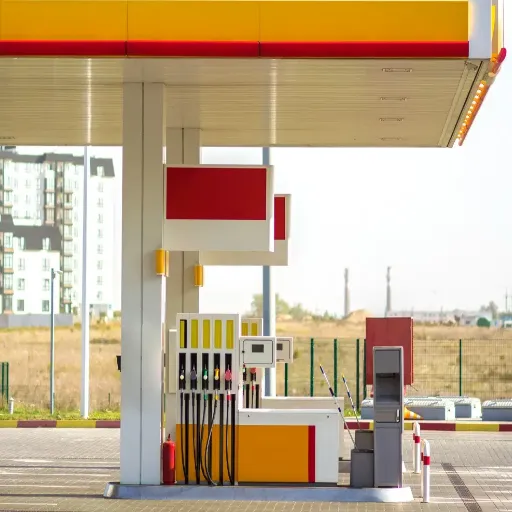
Portable gas stations are evolving to cater to the modern demand for sustainability and advanced technology. One of the paramount considerations in this regard is the integration of alternative energy sources, such as solar panels, to power operations and promote an eco-friendly atmosphere. Enhanced automation and digital payment systems of late render the portable stations more efficient and user-friendly. The emergence of electric vehicles presented yet another force shaping the landscape of portable fuel solutions, with certain stations adding EV charging capabilities to their list of standard fuel offerings. Such offerings integrate convenience with carbon footprint minimization, ensuring that they remain relevant as energy needs evolve.
Technological Innovations in Fuel Dispensers
Technological advancements in fuel dispensers are rapidly altering and shaping the way fuel is supplied to consumers, offering better efficiency, accuracy, and environmental consciousness. Most importantly, IoT integration enables real-time monitoring of fuel levels, dispenser performance, and maintenance schedules, thereby reducing downtime and enhancing operational efficiency from the fuel provider’s perspective.
Another innovation enhancing the user experience is contactless payments, facilitated by the advent of near-field communication (NFC) and NFC-enabled mobile payment applications. These payment systems provide greater user convenience, virtually suppressing any queue time. Increasingly, data indicates that contactless payments are becoming more common, with millions of users worldwide resorting to this mode of secure and simple transactions.
Advancements in precision fueling technology have further improved the measurement of fuel, rather than just ensuring waste or avoiding regulatory breaches. Thus, in some instances, these dispensers utilize an ultrasonic flow meter that provides precise readings without relying on moving parts, thereby reducing maintenance costs.
Another change in the fuel dispenser is its focus on sustainability. Hydrogen refueling stations are equipped with high-pressure systems to refuel hydrogen-powered vehicles in minutes. Similarly, integrated dispensing systems for biofuels and alternative energy sources are gradually becoming more common, indicating the growing acceptance of renewable energy.
These are new age technologies that are redefining fuel dispensers with an eye toward contemporary demands for efficiency, convenience, and environmental concerns. Businesses that utilize such technologies can best meet the changing consumer halfway and the energy transition outlook of tomorrow.
Impact of Electric Vehicles on Portable Fueling
The advancement of electric vehicles is massively reshaping the nature of portable fueling. To me, this challenge to the orthodox fuel infrastructure also presents opportunities for innovation. The entry of the EV into the market means that portable fueling will need to be considered for mobile charging solutions that prioritize flexibility and sustainability. This evolutionary trend aligns with the growing demand for clean energy, enabling businesses like ours to offer convenient and environmentally friendly options for portable charging.
Bluesky Initiatives and Sustainable Practices
At Bluesky, our commitment is towards adopting new avenues for sustainability while advancing greener causes. It is an area of focus in the research agenda for solar-powered portable charging units, which aim to reduce the use of fossil fuels.
A study reveals that deploying solar energy for running EV charging stations can reduce greenhouse gas emissions by approximately 40%, also lowering operational expenses over time.
In line with this, Bluesky is exploring the potential for recycled materials to be used in the manufacturing of their charging units, thereby promoting the global trend of a circular economy. Studies indicate that recycled materials could reduce the amount of energy used in manufacturing by about 30%; consequently, this helps further diminish our carbon footprint.
Water conservation is a concern for Bluesky, and we are executing pilot projects for rainwater harvesting and reuse in production facilities. Depending on the local climate, such practices can typically save a business about 25,000 gallons of water annually.
Conclusion
By combining renewable energy with resource efficiency and technology, Bluesky remains at the forefront of eco-friendly portable fuel and charging solutions, leaving a lasting legacy for the environment and the industry.
The portable gas station industry represents a transformative shift in how we approach fuel distribution and energy access. From remote construction sites to emergency response scenarios, these innovative solutions are breaking down the barriers of traditional fuel infrastructure while prioritizing safety, efficiency, and environmental responsibility.
As we look toward the future, the integration of electric vehicle charging capabilities, renewable energy sources, and advanced IoT technologies will continue to reshape this dynamic sector. The projected growth rates, cost savings, and environmental benefits demonstrated throughout this analysis underscore the vital role that portable fuel solutions will play in meeting the evolving energy demands of our modern world.
For businesses considering the adoption of portable fuel stations, the evidence is clear: these systems offer not just convenience and flexibility, but also significant operational advantages, cost reductions, and alignment with sustainability goals. The future of mobile fueling is here, and it’s more accessible, efficient, and environmentally conscious than ever before.
Reference Sources
“Portable gas leak detection system using IoT and off-the-shelf sensor node”
“Design and Implementation of Portable Outdoor Air Quality Measurement System using Arduino”
“Flare Gas Recovery System Using Integrated Reciprocating Compressor in Gathering Station C”
Frequently Asked Questions (FAQs)
How does a portable fuel station work?
Portable fuel stations utilize a storage tank that may be filled with gasoline or diesel fuel. The system then dispenses fuel into the vehicle tanks or into any equipment to be fueled. These are designed to be stable and safe, and are typically compatible with approved gasoline containers to prevent rupture during transportation.
Advantages of portable gas stations
Convenience, accessibility, and flexibility are among the key advantages offered by portable gasoline stations. It means that fuel can be brought out to a remote area with ease, thereby limiting any downtime that vehicles and other machinery might otherwise experience. Additionally, manufacturers and suppliers can customize portable gas stations to meet the client’s specific requirements, ensuring optimal functionality and efficiency.
Are portable gas stations available for sale?
Portable gas stations are available for sale from several manufacturers and suppliers, including those that specialize in mobile fuel solutions. Many suppliers offer a range of options, including features that can be customized to meet your specific requirements. Before deciding on a sale, it is advisable to compare prices and check for competitive offers that offer cheap products without compromising on quality.
Are there specific manufacturers and suppliers for portable gas stations?
Here are various portable gas station manufacturers and suppliers, especially in China, where many factories specialize in the manufacturing of portable fueling equipment. These suppliers often offer a range of models, from skid-mounted units to mobile fuel stations, in complete configuration, ensuring that customers will always find the solution they require.
What features should I consider while purchasing an on-the-go fueling station?
When considering portable fuel station features, key factors to consider include tank capacity, type of fuel dispenser, ease of transport, and safety certifications. Typically, these stations require rugged construction for durability and stability, and should also undergo rigorous testing for reliability. Features such as a canopy might be pretty helpful, allowing the provider to be shielded from the elements while fueling.
Can I have a portable gas station customized?
Many manufacturers of portable gas stations offer a customization service to adapt the station to meet your specific needs. Customization may include modifications to tank size, dispenser types, and the addition of attachments, allowing the portable setup to carry out the tasks you want it to.
What fuels can be used in a portable gas station?
As a multinational enterprise, they can likely accommodate various types of fuel, such as petrol, diesel, and others. Nevertheless, one should always confirm with the respective manufacturer or supplier about the compatibility of the fuel type they intend to use and ensure that the fuel station features have been designed for the safe storage and dispensing of that fuel.
What type of maintenance is required for a portable fuel station?
Maintenance of a portable refueling station requires regular inspections of its fuel tanks, dispensers, and safety systems to ensure optimal operation and safety. It is essential to monitor all components and ensure that repairs are performed as needed to maintain optimal performance. A manufacturer typically provides maintenance and repair guidelines to ensure the long-term life and reliability of the equipment.

